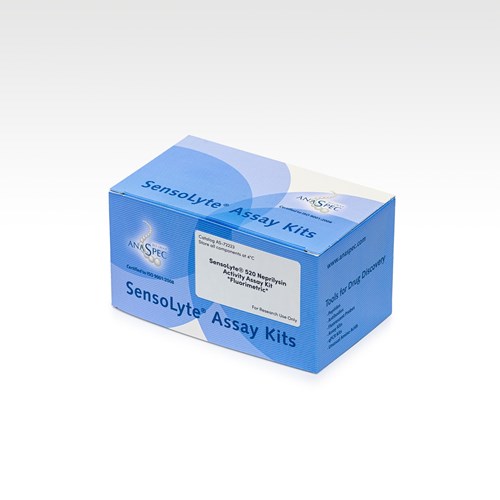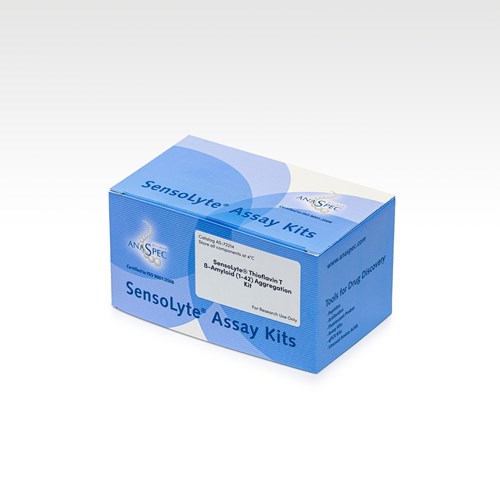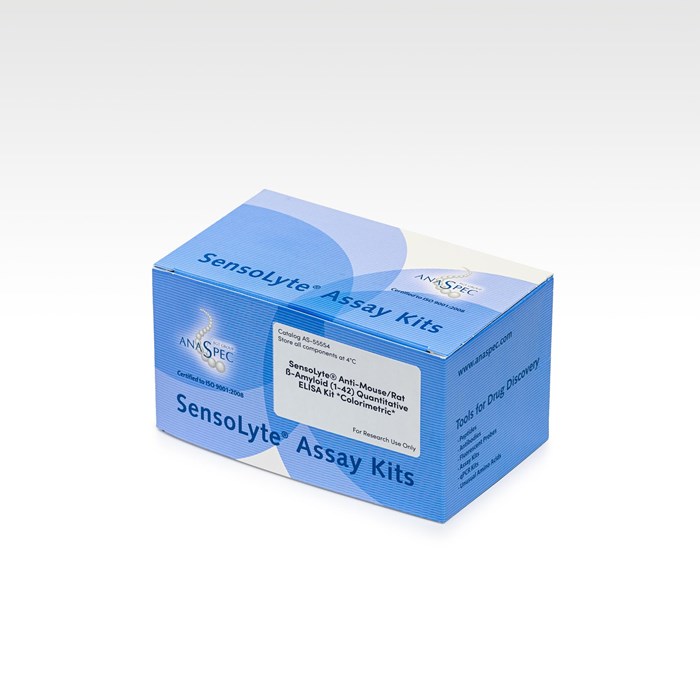SensoLyte® Anti-Mouse/Rat ß-Amyloid (1-42) Quantitative ELISA Kit Colorimetric - 1 kit
- Cat.Number : AS-55554
- Manufacturer Ref. :
-
Availability :
In stock
- Shipping conditions : Ice delivery fees must be applied
Alternative choices
This SensoLyte® high-sensitivity (2pg/ml) beta-Amyloid (1-42) Quantitative ELISA Kit (Mouse/Rat) provides a convenient and quantitative assay for determining mouse/rat beta-Amyloid (1-42) (Aβ42) amount in cell and tissue lysate as well as in body fluids. Compared to other mouse/rat anti-Aβ42 ELISA kits on the market, it takes less time to run this assay. HRP conjugated detection antibody in this kit is added simultaneously with the samples and standards during the assay. This eliminates extra incubation and washing steps and makes this kit a one-step procedure for Aβ42 quantification.
Alzheimer's Disease (AD) is the most common neurodegenerative disorder in elderly people. It has been demonstrated that AD has biological causes and is characterized by the presence of senile plaques and neurofibrillary tangles mainly in cerebral cortex and hippocampus brain regions. Beta-Amyloid (1-40) (Aβ40) and beta-Amyloid (1-42) (Aβ42) are the main components of the above plaques; however, other forms of beta-Amyloid peptides are also present. Both peptides are cleaved from the Amyloid Precursor Protein (APP) by β-secretase and γ-secretase enzymes. Many studies suggest that Aβ42 or/and Aβ43 are required to initiate formation of amyloid plaques and neurofibrills that leads to the neurodegeneration, while Aβ40 is less neurotoxic.
Specifications
| Packaging | |
| Kits components |
|
|---|---|
| Chemistry | |
| UniProt number |
|
| Storage & stability | |
| Storage Conditions |
|
| Activity | |
| Application | |
| Biomarker Target | |
| Detection Method | |
| Detection Limit |
|
| Research Area | |
| Sub-category Research Area | |
| Usage |
|
| Source | |
| Source / Species |
|
| Codes | |
| Code Nacres |
|
Downloads
You may also be interested in the following product(s)


SensoLyte® 520 Neprilysin Activity Assay Kit Fluorimetric - 1 kit

SensoLyte® Thioflavin T ß-Amyloid (1-42) Aggregation Kit - 1 kit
Citations
Synaptic and cognitive improvements by inhibition of 2-AG metabolism are through upregulation of microRNA-188-3p in a mouse model of Alzheimer's Disease.
J Neurosci . 2014 Nov 05 ; 34 14919 | DOI : 10.1523/JNEUROSCI.1165-14.2014.
- J. Zhang
- et al
